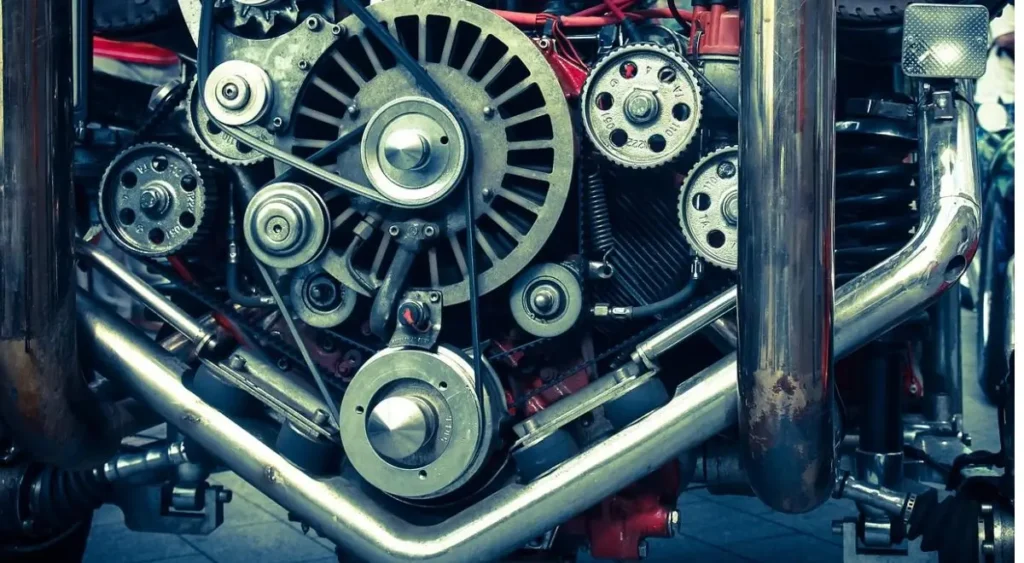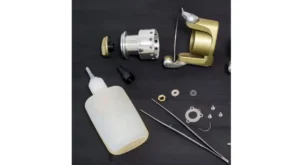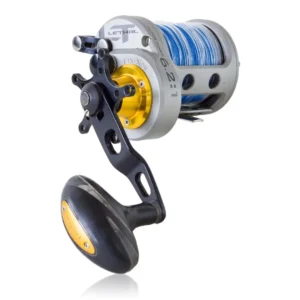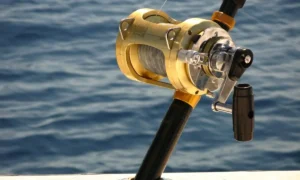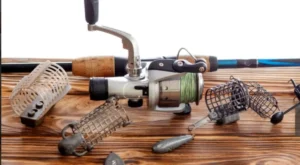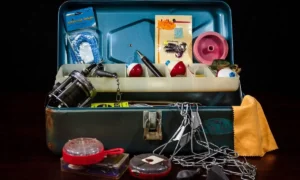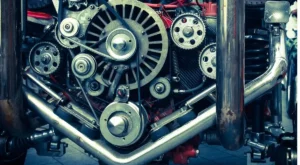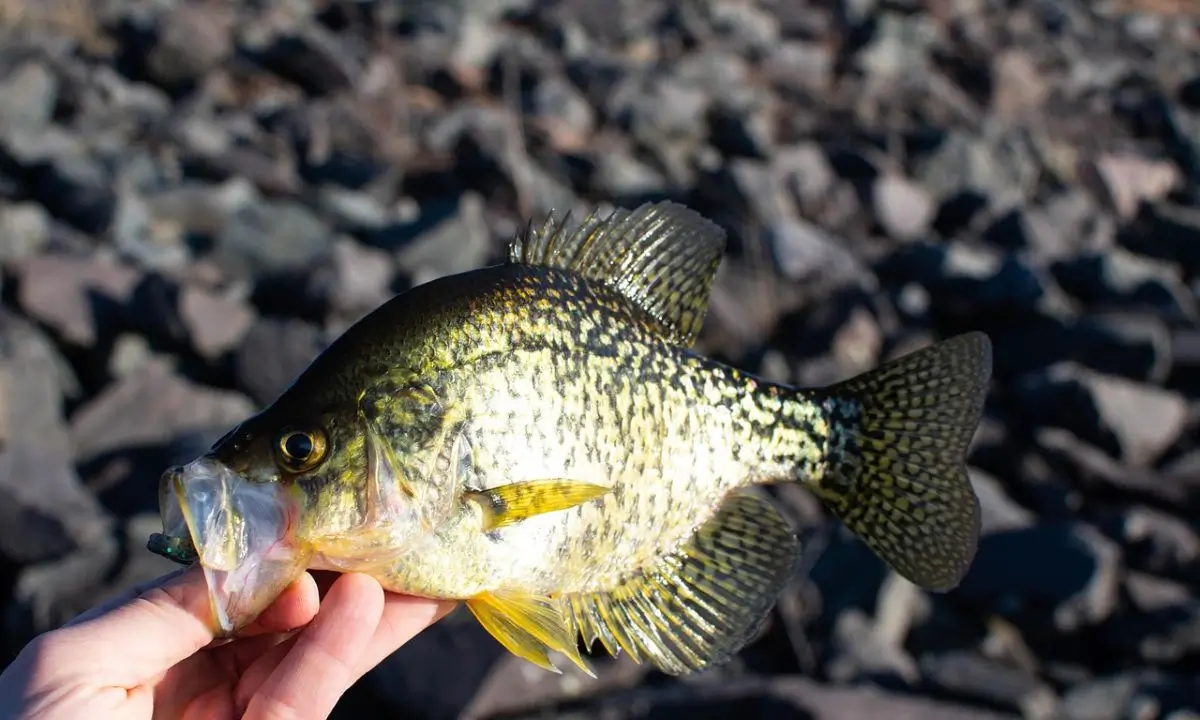Fishing reel gear ratios explain how many times the spool rotates with one turn of the handle. A low gear ratio offers power for big fish, while a high gear ratio gives speed for quick retrieves. Medium ratios balance both, making them best for beginners.
🎣 Introduction:
Fishing Reel Gear Ratios Guide for 2025 Choosing the right fishing reel gear ratio can make a big difference in how you fish. Whether you’re casting, jigging, or trolling, each technique works best with a specific gear ratio. In this updated 2025 guide, we’ll break down what gear ratios mean, how they affect your reel’s performance, and which one to choose based on your fishing style—so you can fish smarter and catch more.
Choosing the right fishing reel gear ratio is one of the most important steps for successful fishing. Many beginners get confused when they see numbers like 5.1:1, 6.2:1, or 7.1:1 printed on their reels. But gear ratio simply tells you how fast or powerful your reel is. In this Fishing Reel Gear Ratios Guide, we’ll break down the difference between low, medium, and high gear ratios, explain how they affect line retrieval speed, and share tips for both freshwater and saltwater fishing.
You’ll also learn which ratios work best for species like bass, catfish, and inshore fish. Whether you’re new to fishing or looking to upgrade your setup, this guide will help you pick the perfect reel for your style. 🎣 more info Fishing Reel Gear Ratio Explained
Why Gear Ratio Matters in Fishing:
When it comes to fishing, one of the most overlooked — yet critical — factors is gear ratio. Whether you’re flipping for bass, trolling for mahi-mahi, or jigging deep for snapper, your reel’s gear ratio determines your success. But what exactly is it?
In this guide, I’ll break down everything I’ve learned over the last 6 years of fishing in different waters. From freshwater finesse to deep-sea monsters, this article will help you choose the best gear ratio for every fishing technique. Let’s reel in the truth!
What is Gear Ratio in Fishing Reels?
A fishing reel gear ratio shows how many times the spool turns when you rotate the reel handle once. For example, a 6.2:1 gear ratio means the spool spins 6.2 times with one full handle turn. This number tells you whether the reel is designed for speed, power, or balance.
- Low gear ratio reels (around 5.1:1 or less) give more torque and pulling power, making them great for fighting big fish.
- High gear ratio reels (7.1:1 or higher) bring in line quickly, perfect for fast-moving lures and active fish.
- Medium gear ratio reels (around 6.2:1) offer a balance of speed and strength, making them the best choice for beginners.
Simply put, gear ratio controls the line retrieval speed of your reel. Knowing this basic detail helps you choose the right reel for your fishing technique and target species.
🎯 Why It Matters:
- Faster ratio = quicker line retrieval.
- Slower ratio = more torque, better control for heavy fish.
Advanced Tips for Choosing the Best Gear Ratio for Fishing Reels
Now that you know the basics of gear ratios, let’s go deeper into some advanced tips that can help you choose the perfect reel for your fishing style. These insights will ensure you get more value from your reel and improve your chances of landing fish successfully.
1. Match Gear Ratio with Lure Type
- Fast gear ratio (7.1:1 and above): Great for jerkbaits, topwater, and buzz baits where quick action is needed.
- Medium gear ratio (6.1:1 – 6.9:1): Perfect all-rounder for crankbaits, spinnerbaits, and most bass fishing techniques.
- Slow gear ratio (5.1:1 – 5.9:1): Best for deep crankbaits and slow-rolling spinnerbaits where you need power more than speed.
👉 Pro tip: Always think about how much line you need to pick up per turn when working a lure. details Fishing Line last
2. Consider Fish Behavior
- Aggressive species (like bass, snook, or peacock bass): Higher gear ratios give you speed to catch up.
- Strong bottom dwellers (like grouper or catfish): Lower gear ratios help with control and power.
3. Pay Attention to Line Capacity
Sometimes anglers choose the wrong reel because they ignore line capacity. If you’re fishing in saltwater or targeting bigger fish, a reel with lower gear ratio and larger spool is a smarter choice.
4. Technique-Specific Adjustments
- Pitching and flipping: Medium to high gear ratio reels give quick hooksets.
- Deep-sea trolling: Lower ratios work better for pulling heavy rigs.
- Finesse fishing: Medium gear ratio reels allow more natural presentations.
5. Location Matters
In places like Florida, where saltwater and freshwater fishing are both popular, having more than one reel with different gear ratios is a smart investment. Freshwater bass fishing may need a 6.5:1 reel, while offshore fishing for tarpon may need a 5.4:1 reel for power.
Choosing the right gear ratio is not just about numbers. It’s about how you fish, where you fish, and what you’re fishing for. Always balance speed, power, and control to maximize performance on the water.
Types of Gear Ratios (Low, Medium, High)
Fishing reels come in low, medium, and high gear ratios, each designed for specific fishing techniques and species. Understanding the differences helps you choose the right reel for your style and target fish.
1. Low Gear Ratio (5.1:1 – 5.9:1)
- Best For: Catfish, deep crankbaits, heavy lures.
- Pros: High torque, excellent for fighting big or strong fish; slow, controlled retrieves.
- Cons: Slower line retrieval; not ideal for fast-moving lures.
- Tips: Perfect for beginners targeting strong freshwater species.
2. Medium Gear Ratio (6.0:1 – 6.9:1)
- Best For: Bass, panfish, inshore saltwater species.
- Pros: Balanced speed and power; versatile for most fishing situations.
- Cons: Not specialized for extremely fast or heavy fish situations.
- Tips: Ideal all-rounder; beginners and experienced anglers both benefit.
3. High Gear Ratio (7.0:1 and above)
- Best For: Fast-moving species, topwater lures, jerkbaits, or active inshore fish like snook.
- Pros: Fast line retrieval, efficient lure action, reduces fatigue.
- Cons: Less torque, harder to fight heavy fish.
- Tips: Best for advanced anglers or fast fishing techniques.
| Gear Ratio | Best For | Pros | Cons |
| 5.1:1 – 5.9:1 | Catfish, heavy lures | High torque, strong pulls | Slow retrieval |
| 6.0:1 – 6.9:1 | Bass, panfish, inshore | Balanced speed & power | Not specialized |
| 7.0:1+ | Topwater, jerkbaits, snook | Fast retrieval, efficient | Less torque |
By knowing low, medium, and high gear ratios, you can match your reel with the fishing technique, lure type, and target species, ensuring a better experience on the water.
Best Fishing Reels by Gear Ratio
Choosing the right fishing reel goes hand in hand with understanding gear ratios. Different reels suit different fishing styles, species, and techniques. Here’s a guide to some of the best reels for each gear ratio.
Low Gear Ratio Reels (5.1:1 – 5.9:1)
- Best For: Catfish, big freshwater species, deep crankbaits.
- Examples:
- Shimano Curado 200HG (5.4:1) – strong and reliable for heavy fish.
- Daiwa Tatula SV TW (5.3:1) – excellent torque, smooth drag system.
- Why: These reels give power to fight strong fish without straining your arm.
Medium Gear Ratio Reels (6.0:1 – 6.9:1)
- Best For: Bass, panfish, inshore saltwater species.
- Examples:
- Abu Garcia Revo SX (6.4:1) – versatile and beginner-friendly.
- Shimano SLX DC (6.2:1) – balanced speed and control.
- Why: Medium ratios are perfect all-rounders, giving both speed and strength for most lures.
High Gear Ratio Reels (7.0:1+)
- Best For: Topwater lures, jerkbaits, active inshore species like snook and redfish.
- Examples:
- Daiwa Zillion SV TW (7.1:1) – extremely fast line retrieval.
- Shimano Metanium MGL (7.3:1) – perfect for quick lure action and aggressive fish.
- Why: High ratios help anglers quickly retrieve line and maintain lure action, ideal for fast-moving fish.
| Gear Ratio | Reel Example | Best For | Beginner/Pro |
| 5.1:1 – 5.9:1 | Shimano Curado 200HG | Catfish, big freshwater | Beginner/Pro |
| 6.0:1 – 6.9:1 | Abu Garcia Revo SX | Bass, panfish | Beginner/Pro |
| 7.0:1+ | Daiwa Zillion SV TW | Topwater, jerkbaits | Pro |
Pro Tip: Beginners should start with medium ratio reels for versatility. Once you gain experience, try high or low ratio reels depending on your favorite species and fishing techniques. details Gear Ratio Fishing Reels
🛠️ Best Gear Ratios by Fishing Technique
Let’s break it down by fishing style so you can pick the perfect reel ratio.
🎯 1. Spinning Reels (Best for Versatility & Beginners)
Recommended Ratio: 5.2:1 to 6.2:1
- Use for: Lightweight lures, finesse fishing, live bait
- Why: Balanced speed and control
🔹 Example: 6.2:1 is ideal for drop shot or slow jigging where feel is more important than speed.
🎯 2. Baitcasting Reels (Power + Precision)
Recommended Ratio: 6.3:1 to 8.1:1
- Use for: Bass fishing, flipping, pitching
- Why: Fast retrieve lets you cover more water and react quicker
🔹 My Go-To: I use a 7.1:1 for topwater and spinnerbaits — quick line pickup after each cast.
🎯 3. Trolling (Saltwater Big Game or Freshwater Stripes)
Recommended Ratio: 4.1:1 to 5.1:1
- Use for: Big saltwater species like mahi-mahi, tuna, or wahoo
- Why: Slower ratio gives torque for fighting big fish
🔹 Pro Tip: When trolling for mahi-mahi in the Florida Keys using deep-diving lures, I prefer a 4.2:1 gear ratio for smoother control and better lure action.
🎯 4. Jigging (Vertical Fishing or Deepwater)
Recommended Ratio: 6.0:1 to 7.0:1
- Use for: Snapper, amberjack, grouper
- Why: Fast drop, fast retrieve, vertical control
🔹 Real Case: A 6.3:1 helped me land a 30lb amberjack — fast enough to beat the reef.
🎯 5. Surf Fishing (Distance + Stability)
Recommended Ratio: 4.9:1 to 5.6:1
- Use for: Striped bass, redfish, pompano
- Why: Slow retrieve with enough power for casting distance and reeling in heavy sinkers
🎯 6. Ice Fishing (Precision in Tight Spots)
Recommended Ratio: 2.5:1 to 4.9:1
- : Best suited for: Light jigging rigs used in ice fishing holes.
- Why: Low-speed, high-control for cold conditions
🔹 Tip: I use 3.6:1 for crappie and perch under frozen lakes — steady, no over-pull.
📊 Pros and Cons of Gear Ratios
| Gear Ratio Type | Pros | Cons |
| High (7.0:1+) | Fast retrieve, ideal for lures | Less torque, hard on big fish |
| Medium (5.4:1–6.4:1) | Balanced for most techniques | Jack of all trades, master of none |
| Low (3.8:1–4.9:1) | High torque, control in deep water | Slower retrieval |
Common Mistakes Beginners Make
Beginners often struggle with gear ratios because they don’t fully understand how reel speed and power affect fishing. Avoiding these mistakes will save time, reduce frustration, and improve success on the water.
1. Choosing the Wrong Gear Ratio
- Many beginners pick high-speed reels thinking faster is always better.
- Tip: Match your reel to your target species and lure type. Medium ratios are usually best for all-around fishing.
2. Ignoring Rod and Line Compatibility
- Using a heavy line with a high-speed reel can cause poor lure action.
- Tip: Always check line type, rod power, and gear ratio compatibility.
3. Not Testing Retrieval Speed
- Beginners often reel too fast or too slow, affecting lure performance.
- Tip: Practice in the yard or shallow water to understand retrieval speed.
4. Overlooking Fish Species Behavior
- Each fish behaves differently. High-speed reels may work for bass, but not for catfish or grouper.
- Tip: Research your target species and choose gear accordingly.
Pro Tip: Keep a small journal of your reel setups and results. It helps identify mistakes faster and improves fishing efficiency. details Fishing Reel Gear Ratio Chart
Pro Tips & Expert Advice
Understanding gear ratios is just the start. Here are some expert tips to maximize your fishing success:
1. Match Rod, Reel, and Line
- Always pair your reel’s gear ratio with the correct rod power and line type. Light rods with medium reels work well for finesse techniques, while heavy rods with low ratio reels are ideal for strong fish.
2. Adjust Retrieval Speed
- Practice controlling your retrieval speed to match the lure and fish behavior. A slow, steady retrieve often works for heavy lures, while a fast retrieve is better for topwater and jerkbaits.
3. Know Your Location
- In Florida waters, for example, a medium gear ratio reel (6.2:1) works for bass and panfish in freshwater, while a low ratio (5.4:1) helps fight strong inshore saltwater species like redfish.
4. Experiment with Lures
- Don’t stick to one lure. Test different types and observe how gear ratios affect action. Adjust your ratio choice for faster or slower retrieves depending on fish activity.
Pro Tip: Keep notes of your setups, species caught, and reel performance. This builds your personal experience and helps choose the right gear ratio for every fishing trip.
Conclusion
Understanding fishing reel gear ratios is essential for improving your fishing success. Low, medium, and high ratios each have unique advantages depending on fish species, lure type, and water conditions. Beginners often benefit from medium gear ratio reels for versatility, while experienced anglers can choose specific ratios for targeted techniques. Always match your reel with the right rod and line, test retrieval speeds, and adapt to local fishing conditions. 🎣
Ready to level up? Check out our other guides to learn about choosing the best rods, lures, and techniques for freshwater and saltwater fishing.
🎣 Ever wondered how the Fishing Reel Gear Ratios Guide can help you cast farther? Share your favorite reel setup and casting tips in the comments and let’s learn together!
✍️ Written by Jihad – Professional Fisherman
Website: profishingbyjihad.com
What is a fishing reel gear ratio?
fishing reel gear ratio shows how many times the spool rotates with one turn of the handle. It affects line retrieval speed and power for different fishing techniques.
Which gear ratio is best for beginners?
Medium gear ratios (around 6.2:1) are best for beginners. They balance speed and power, making it easier to use for various freshwater and inshore species.
What gear ratio is best for bass fishing?
For bass, a medium to high gear ratio (6.4:1–7.1:1) works best. It allows fast line retrieval for topwater and active lure techniques.
Should I use a low or high gear ratio for catfish?
Low gear ratios (5.1:1–5.5:1) are ideal for catfish. They provide more torque to pull heavy fish without tiring your arms.
How does gear ratio affect lure action?
Gear ratio controls how fast your lure moves. High ratios make lures move quickly, while low ratios give slower, controlled action, which can be important for heavy or deep-water lures.
Can I use the same gear ratio for freshwater and saltwater?
Yes, medium gear ratio reels are versatile for both freshwater and saltwater fishing, but consider lure type, species, and water depth for best results.
What happens if I choose the wrong gear ratio?
Using the wrong ratio can make retrieving harder, reduce lure action, and make fighting fish more tiring. Choosing the right ratio improves efficiency and success.


